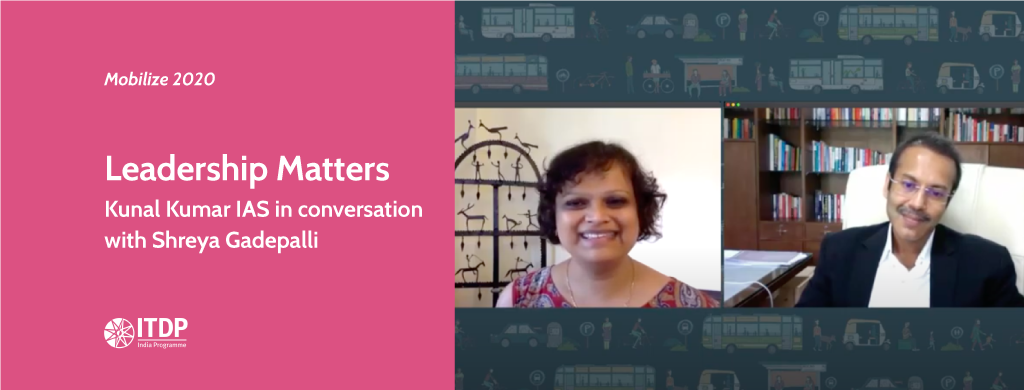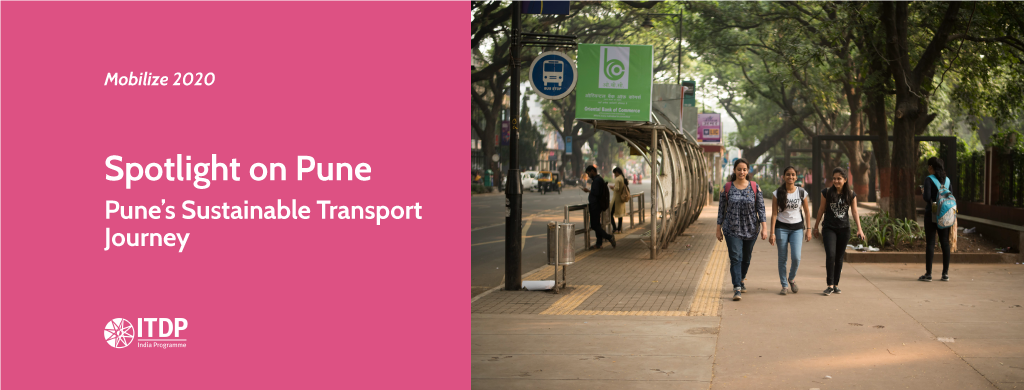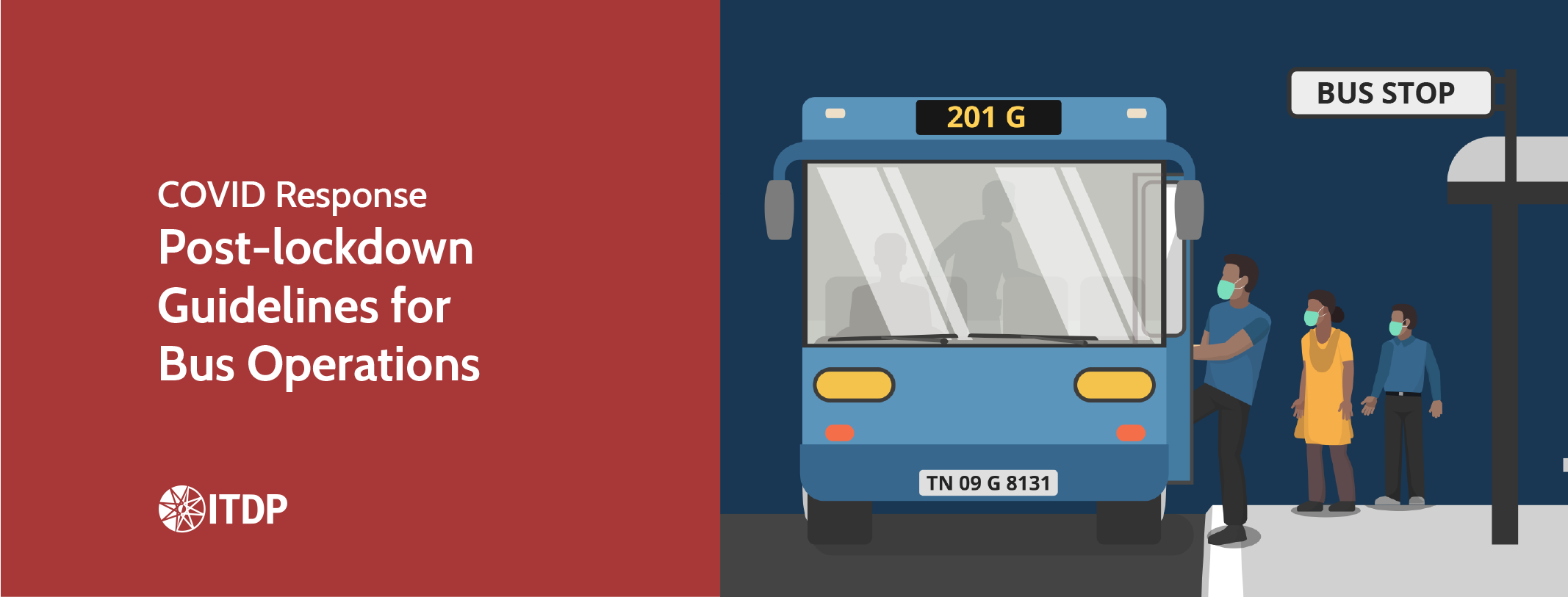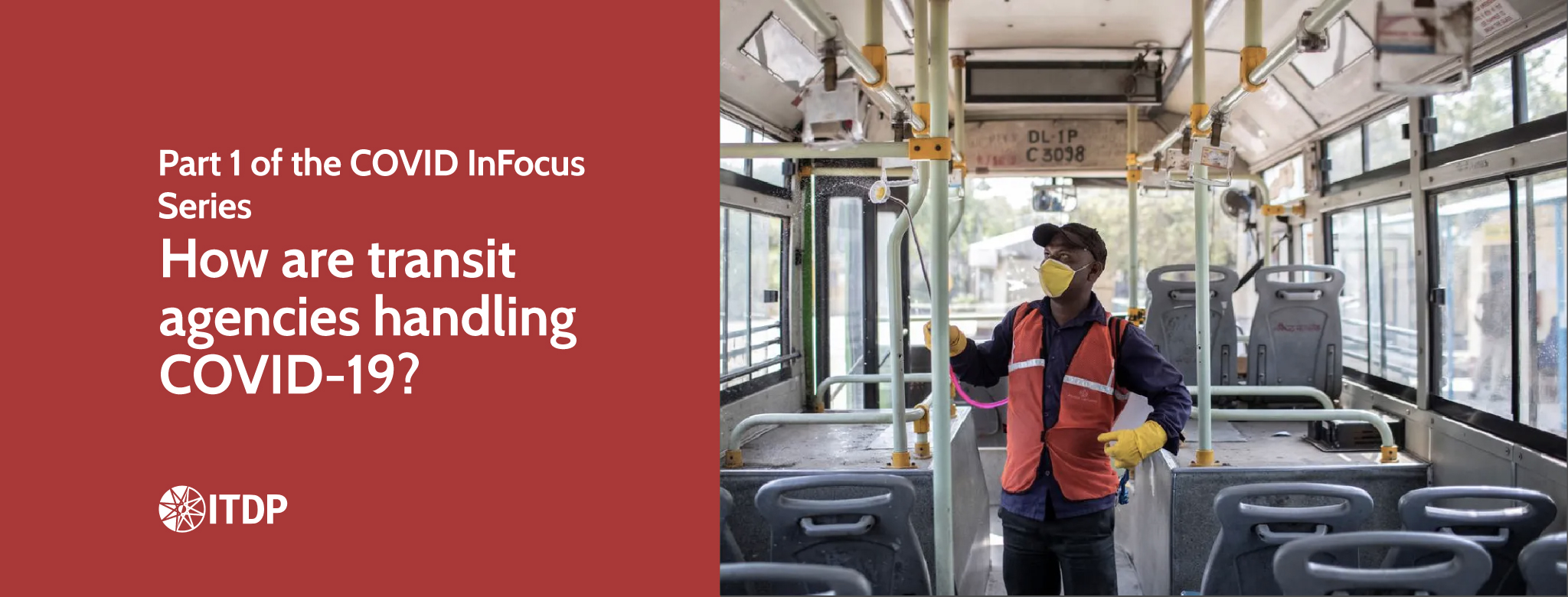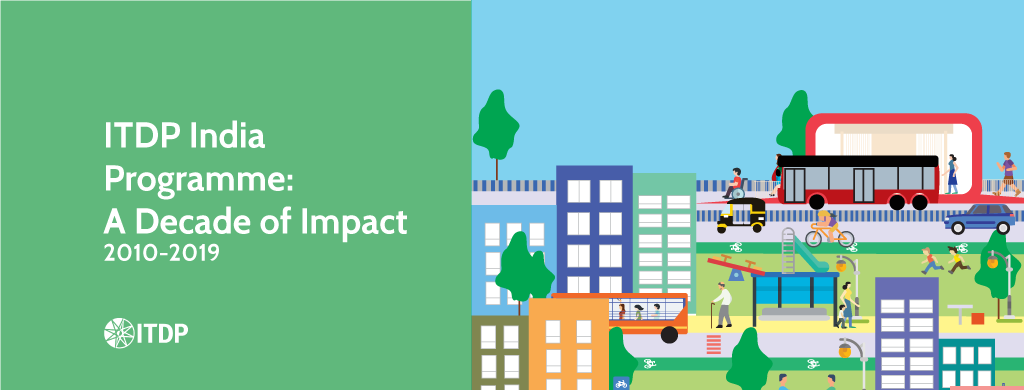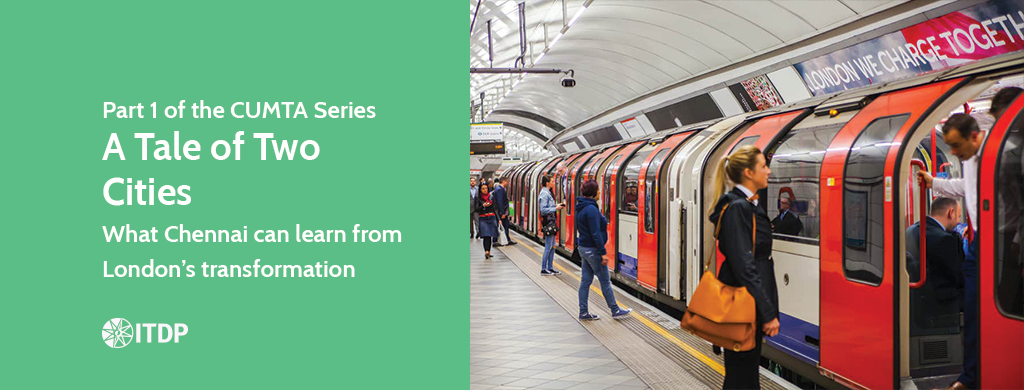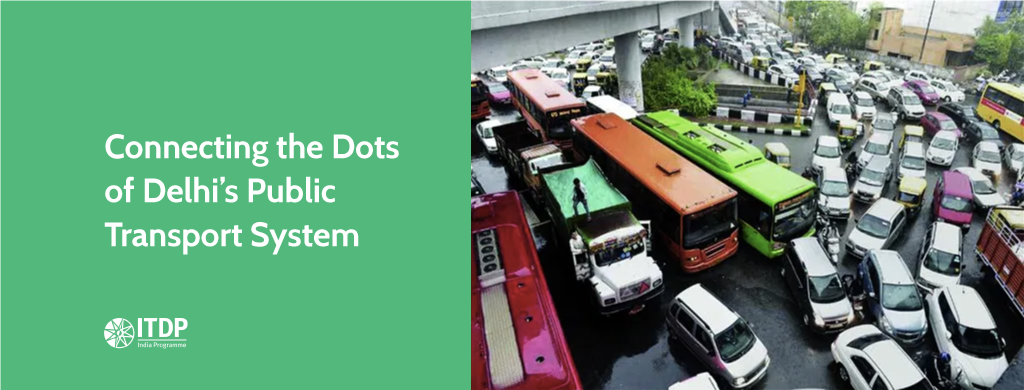As published in Observer Research Foundation
In the last decade, as India’s urban population surged by 26 percent,1 the use of personal motor vehicles (PMV) grew by 138 percent.2 India took 60 years (1951-2008) to reach 105 million registered vehicles and added the same number of vehicles in the subsequent six years (2009-2015), which put pressure on existing road networks and transport systems.3 The current urban transport governance framework is fragmented, with different agencies managing different aspects of the sector; in Delhi alone, over ten agencies handle transport, including three municipal corporations, the Public Works Department (PWD), national and state highways, the Delhi Transport Corporation (DTC), and the Delhi Integrated Multi-Modal Transit System Limited (DIMTS).4 Such fragmentation leads to a lack of coordination and inefficiencies in project implementation and timelines.
There is an urgent need for reforms in India’s urban transport governance frameworks to ensure effective city-level action that can keep pace with the rapid population growth and its evolving needs. Such reforms will also require interventions at the national, state, and city levels.
National-Level Interventions: Setting the Vision and Funding Mandates
The National Urban Transport Policy (NUTP), issued by the Ministry of Urban Development (MoUD) in 2006,5 was aimed at bringing about comprehensive improvements in urban transport services and infrastructure. The NUTP transformed India’s transport priorities, focusing on the mobility of people rather than vehicles and paving the way for schemes and programmes to support states and cities in improving urban mobility, such as the Jawaharlal Nehru National Urban Renewal Mission (JNNURM),6 the Smart Cities Mission, 7 and Faster Adoption & Manufacturing of Hybrid and Electric Vehicles (FAME I and II).8 However, the NUTP lacked a definitive vision with specific goals as well as a mandate to enable the funding of state- and city-level initiatives. Consequently, many states and cities struggled to meet the increasing demand for mobility. The approximately 30,000 buses that were introduced across India’s urban districts through schemes like JNNURM 9 10and FAME11 fell significantly short of the 200,000 requirement.12 Therefore, the NUTP highlights the need to establish a clear vision for urban mobility and mandate sufficient funding allocations in order to accelerate reforms.
The Cycles4Change,13 Streets4People,14 and Transport4All15 projects, which were initiated at the national level by the Ministry of Housing and Urban Affairs (MoHUA) in 2021, demonstrated a welldefined vision for urban mobility. The programmes have sought to address funds allocation, peer learning, and institutional synergy.
Utilising a participatory approach, the initiatives provided step-bystep guidance to cities to improve their walking, cycling, and public transport infrastructures. They also included a funding component to test solutions in top-performing cities, fostering intra-state competition and enabling city governments to effectively scale up transformation. The effort led to Healthy Streets Apex Committees being formed in over 30 cities, which set goals for projects and programmes to promote walking and cycling.16
Simultaneously, Transport4All Taskforces comprising government and non-government stakeholders were created in 100 cities to improve public transport systems.17 The projects also facilitated knowledge exchange among cities, enabling them to learn from the experiences of others within and outside their state. This collaborative approach led to a rapid improvement in urban mobility infrastructure and services.
Consequently, 15 cities adopted Healthy Streets Policies to establish a framework towards prioritising walking and cycling. Nineteen cities also developed three-year action plans that laid out goals and strategies to achieve the Healthy Streets vision.18 The plans included strategies and budgets for the city-wide expansion of walking and cycling initiatives, and clearly identified roles and responsibilities of various city agencies towards implementing these strategies. By fostering competition and knowledge exchange as well as providing cities with a clear roadmap and budget for improving sustainable mobility, the initiatives have inspired more than 100 cities to take proactive action towards transforming urban transport in their jurisdictions.19
State Level: Need for State Funding and City-Level Action Mandates
Some states have attempted to address specific aspects of mobility through policies—for example, on electric vehicles or those for transit-oriented development—which have independent agendas and visions. A holistic approach to sustainable mobility through a state-level Sustainable Urban Transport Policy (SUTP) that can guide city-level policies and projects could help these policies be more effective. Such an overarching policy can standardise regulations, allocate the required financial resources to ensure on ground implementation, and facilitate knowledge exchange to drive sustainable mobility initiatives. It can also mandate and monitor city-level actions, ensuring accountability and consistency across jurisdictions.
A few states in India are paving the way for effective urban transport initiatives in cities. In 2017, the Maharashtra Urban Development Department released the draft Maharashtra Urban Mobility Policy.20 Applicable to all urban areas in the state, the policy envisioned modes of transport that are safe, reliable, sustainable, and accessible for all citizens. The policy also included tangible metrics for infrastructure implementation that could measure its success.
To support cities in implementing sustainable mobility projects on ground, the Government of Karnataka set up the State Urban Transport Fund (SUTF),21 administered by the Directorate of Urban Land Transport. Mobilised from three sources—a 1-percent cess on Motor Vehicle Tax (MVT), a 2-percent cess on property tax, and budgetary support from the state—the fund promotes the public transport system in cities by assisting in the construction of city transit infrastructure, implementing non-motorised transport (NMT) systems, and developing projects and feasibility study reports, among others. In 2021, the Tamil Nadu Transport Department secured a loan of INR 1,600 crore (approx. US$200 million) from the KfW Development Bank to procure 2,000 e-buses by 2025 for three cities, including the capital, Chennai, to improve the quality of public transport in these cities.22 Large procurements of electric buses, which are expensive and often beyond the budgets of many cities, could be challenging without state support.
City Level: Need for an Institutional Framework, Policies, and Funding
- Setting up robust institutional frameworks The NUTP recommended setting up a Unified Metropolitan Transport Authority (UMTA)23 in all cities with a population of over one million. UMTAs were envisioned as nodal agencies for all mobility initiatives in a city in order to oversee timely implementation even with the involvement of multiple agencies. They can ensure transparency of decisions across different departments and the accountability of agencies responsible for project delivery. However, very few cities have established a functional UMTA due to the lack of regulatory mandates to form such an entity. 24The Chennai Unified Metropolitan Transport Authority (CUMTA) Act, which was passed in 2010 25and has been operational since 2019, has brought key agencies and stakeholders together under a single roof, ensuring the seamless integration and implementation of all transport projects across various modes in the city. As a coordinating body, it has helped integrate transport planning and decision-making in Chennai. Karnataka also formed a Non-Motorised Transport Agency (KNMTA) in 2019 to implement a public bicyclesharing system in Bengaluru, alongside undertaking other NMT activities in the state.26 Similarly, Pune has set up taskforces and cells to oversee the planning, implementation, and maintenance of various NMT initiatives, including27 a participatory NMT Cell to support the transformation of streets across the city.28
- Adopting progressive policies and plans There is a need for specific policies and roadmaps that address various aspects of sustainable mobility in cities, including active transport infrastructure for walking and cycling, public transport, parking management, transit-oriented development, low-emission zones, and electrification. These policies must embed the principles of sustainable mobility into the city’s transport-related decision making. At present, Indian cities lack the processes that could enable data-based decision-making. Well-designed policies and roadmaps with clear, actionable, measurable targets can help cities monitor their successes and shortcomings, hold relevant stakeholders accountable for implementation, and ensure data-driven decision-making. For instance, Chennai and Pune have adopted urban mobility policies that prioritise walking, cycling, and public transport. Starting in 2014, Chennai adopted India’s first NMT policy, which inspired Pune and Pimpri-Chinchwad to adopt the same.29 In 2016, Pune adopted India’s first progressive parking policy,30 inspiring Chennai to also start a similar exercise. These policies have initiated a move towards sustainable mobility, created best practices and benchmarks, and inspired other cities
- Setting the right budget Cities remain at the forefront of implementing transport policies and projects, as they have a better understanding of their unique challenges and opportunities compared to other levels of government. Therefore, they are best positioned to efficiently allocate resources to meet ever-changing urban demands. City-level budgets are critical for public transport services. City-level budget allocation also reduces the burden on state and national governments. For example, the twin cities of Pune and PimpriChinchwad have consistently allocated at least 25 percent of their annual transport budget for the last five years towards improving walking, cycling, and public transport infrastructure.31 Similarly, the Greater Chennai Corporation launched the Chennai Mega Streets Programme 32 in 2020 to create a city-wide network of streets that have a lifespan of at least 30 years, with funds allocated in the 2020 Tamil Nadu budget for the preparation of detailed project reports (DPRs) and commencement of work. 33
Addressing the complex challenges of urban transport governance demands concerted efforts at multiple levels of governance, from overarching national policies to city-level initiatives. The national government needs to set the right vision, backed by strong funding mandates for states and cities, while facilitating peer-topeer learning between cities and states to accelerate transformation. As demonstrated in Maharashtra, Karnataka, and Tamil Nadu, it is critical for states to support cities in implementation through policy and funding and mandating city-level action. Additionally, cities need to set up strong institutions such as CUMTA, adopt progressive policies as in the case of Pune, and allocate financial resources to meet ever-changing urban demands to ensure effective action.
Learning from successful experiences can pave the way for sustainable, efficient, and inclusive urban mobility systems. The journey to transform urban transport is long, but with the right policies, funding, and city-level action, it is a goal that could prove to be within reach.
Written by
Sivasubramaniam Jayaraman, National Lead and Senior Programme Manager in charge – public Transport system and TDM
Vaishali Singh, Manager – Transport Systems and Electric Mobility
- World Bank, “Urban Population (% of Total Population) – India,” 2022,
https://data.worldbank.org/indicator/SP.URB.TOTL.IN.ZS?locations=IN ↩︎ - Ministry of Road Transport and Highways, Government of India, “Road Transport Yearbook(s), 2008,
2009, 2010, 2011, 2012, 2013, 2014, 2015, 2016,” https://morth.nic.in/road-transport-year-books ↩︎ - Ministry of Road Transport and Highways, Government of India, “Road Transport Yearbook(s), 2008,
2009, 2010, 2011, 2012, 2013, 2014, 2015, 2016” ↩︎ - “Too Many Agencies Monitoring Public Transport in NCR, Need Revamp: Panel,” The Indian Express,
August 29, 2013,
https://indianexpress.com/article/cities/delhi/too-many-agencies-monitoring-public-transport-inncr-need-revamp-panel/ ↩︎ - Ministry of Urban Development, Government of India, National Transport Policy, Ministry of Urban
Development, New Delhi, 2006, https://mohua.gov.in/upload/uploadfiles/files/TransportPolicy.pdf ↩︎ - Ministry of Urban Development and Ministry of Urban Employment and Poverty Alleviation,
Government of India, Jawaharlal Nehru National Urban Renewal Mission, Overview, New Delhi,
https://mohua.gov.in/upload/uploadfiles/files/1Mission%20Overview%20English(1).pdf ↩︎ - Smart Cities Mission, “Vision of Smart Cities Mission,” Ministry of Housing and Urban Affairs,
https://smartcities.gov.in/ ↩︎ - Ministry of Heavy Industries, Government of India,
https://pib.gov.in/PressReleaseIframePage.aspx?PRID=1942506 ↩︎ - K.C. Sivaramakrishnan, “Urban Transport: A Bus to Nowhere,” The Economic Times, April 20, 2009,
https://economictimes.indiatimes.com/view-point/urban-transport-a-bus-to-nowhere/
articleshow/4422393.cms?from=mdr; Ministry of Urban Affairs, Government of India, “Procurement
of 10,000 Buses and Ancillary Infrastructure,” 2013. ↩︎ - Ministry of Urban Development, Government of India, “Recommendatory Urban Bus Specifications –
II,” 2013, https://mohua.gov.in/upload/uploadfiles/files/Urban-Bus-Specifications-II.pdf ↩︎ - Ministry of Heavy Industries, Government of India, “Status of Sanction of Electric Buses Under FAME
India Scheme II,’ Ministry of Heavy Industries, https://dash.heavyindustries.gov.in/dhieb ↩︎ - Calculated by ITDP India ↩︎
- Ministry of Housing and Urban Affairs, Government of India, “India Cycles for Change (IC4C) Challenge,”
https://smartcities.gov.in/India_Cycles_for_Change ↩︎ - Ministry of Housing and Urban Affairs, Government of India, “Streets for People Challenge,”
https://smartcities.gov.in/Streets_for_People_Challenge ↩︎ - Ministry of Housing and Urban Affairs, Government of India,
https://www.pib.gov.in/PressReleasePage.aspx?PRID=1874732 ↩︎ - ITDP India, “10 Things that Shaped Out 2022,” https://www.itdp.in/itdp-indias-year-end-roundup/ ↩︎
- Ministry of Housing and Urban Affairs, Government of India,
https://www.pib.gov.in/PressReleasePage.aspx?PRID=1874732 ↩︎ - Ministry of Housing and Urban Development, Streets for People, Pathways of Change from India’s Smart
Cities, New Delhi, 2023,
https://smartcities.gov.in/sites/default/files/2024-03/Street%20Compendium%202023%2018-12.pdf ↩︎ - Ministry of Housing and Urban Affairs, Government of India,
https://pib.gov.in/PressReleaseIframePage.aspx?PRID=1739905; Ministry of Housing and Urban
Affairs, Government of India, https://pib.gov.in/PressReleasePage.aspx?PRID=1790637; Ministry of
Housing and Urban Affairs, Government of India,
https://www.pib.gov.in/PressReleasePage.aspx?PRID=1874732 ↩︎ - ITDP India, “Maharashtra Urban Mobility Policy,”
https://www.itdp.in/maharashtra-urban-mobility-policy/ ↩︎ - Directorate of Urban Land Transport, “State Urban Transport Fund (SUTF),” Urban Development
Department, Government of Karnataka,
https://dult.karnataka.gov.in/69/state-urban-transport-fund-%28sutf%29/en#:~:text=The%20
Directorate%20of%20Urban%20Land,support%20from%20Government%20of%20Karnataka. ↩︎ - Julie Mariappan, “Tamil Nadu Receives Rs 1600 Crore from German Aid Agency,” The Times of India,
September 27, 2019,
https://timesofindia.indiatimes.com/city/chennai/tamil-nadu-receives-rs-1600crore-loan-fromgerman-aid-agency/articleshow/71319544.cms ↩︎ - Ministry of Urban Development, Government of India, National Transport Policy 2006. ↩︎
- Dhaval Desai, “Lost in Transit: Unified Metropolitan Transport Authority (UMTA),” Observer Research
Foundation, January 8, 2022,
https://www.orfonline.org/research/lost-in-transit-unified-metropolitan-transport-authority-umta ↩︎ - Government of Tamil Nadu, “Chennai Unified Metropolitan Transport Authority Act 2010,”
https://www.indiacode.nic.in/bitstream/123456789/13110/1/cumta_act.pdf ↩︎ - Directorate of Urban Land Transport, “Karnataka Non-Motorised Transport Agency (KNMTA),” Urban
Development Department, Government of Karnataka, https://dult.karnataka.gov.in/127/knmta/en ↩︎ - ITDP India, “Chennai Non-Motorised Transport Policy,” ITDP India,
https://www.itdp.in/maharashtra-urban-mobility-policy/https://www.itdp.in/resource/chennainon-motorised-transport-policy/#:~:text=The%20Chennai%20Corporation’s%20Council%20
adopted,greenways%20and%20other%20NMT%20facilities ↩︎ - Pune Municipal Corporation, Pune Smart City, Pune’s Sustainable Transport Journey, Pune, 2021,
https://www.itdp.in/wp-content/uploads/2021/02/Punes-Sustainable-Transport-Journey.pdf ↩︎ - ITDP India, “Chennai Non-Motorised Transport Policy,”
https://www.itdp.in/maharashtra-urban-mobility-policy/https://www.itdp.in/resource/chennainon-motorised-transport-policy/#:~:text=The%20Chennai%20Corporation’s%20Council%20
adopted,greenways%20and%20other%20NMT%20facilities ↩︎ - Pune Municipal Corporation, “Public Parking Policy 2016,”
https://www.pmc.gov.in/sites/default/files/project-glimpses/PMC-public-parking-policy-Englishrevised-March2016-Final.pdf ↩︎ - Keshav Suryanarayan, “Pune Leads India Towards a Sustainable Future,” ITDP India, January 2020,
https://www.itdp.org/wp-content/uploads/2020/01/Pune-Leads-India-Toward-a-SustainableFuture-ITDP.pdf ↩︎ - Komal Gautham, “Greater Chennai Corporation Fast Tracks Mega Streets Project,” The Times of India,
July 15, 2022,
https://timesofindia.indiatimes.com/city/chennai/corpn-fast-tracks-mega-streets-project/
articleshow/92885712.cms ↩︎ - “Chennai’s Streets for People: The Journey,” ITDP India, February 29, 2020,
https://itdp.in/chennais-streets-for-people-the-journey/ ↩︎













